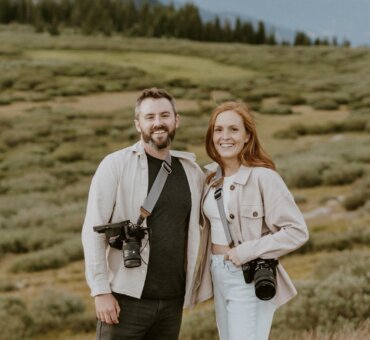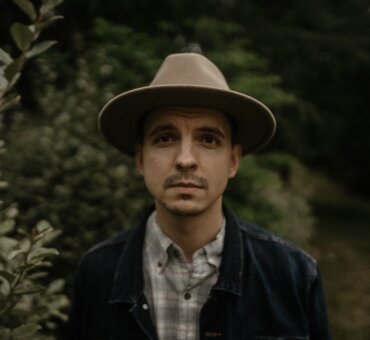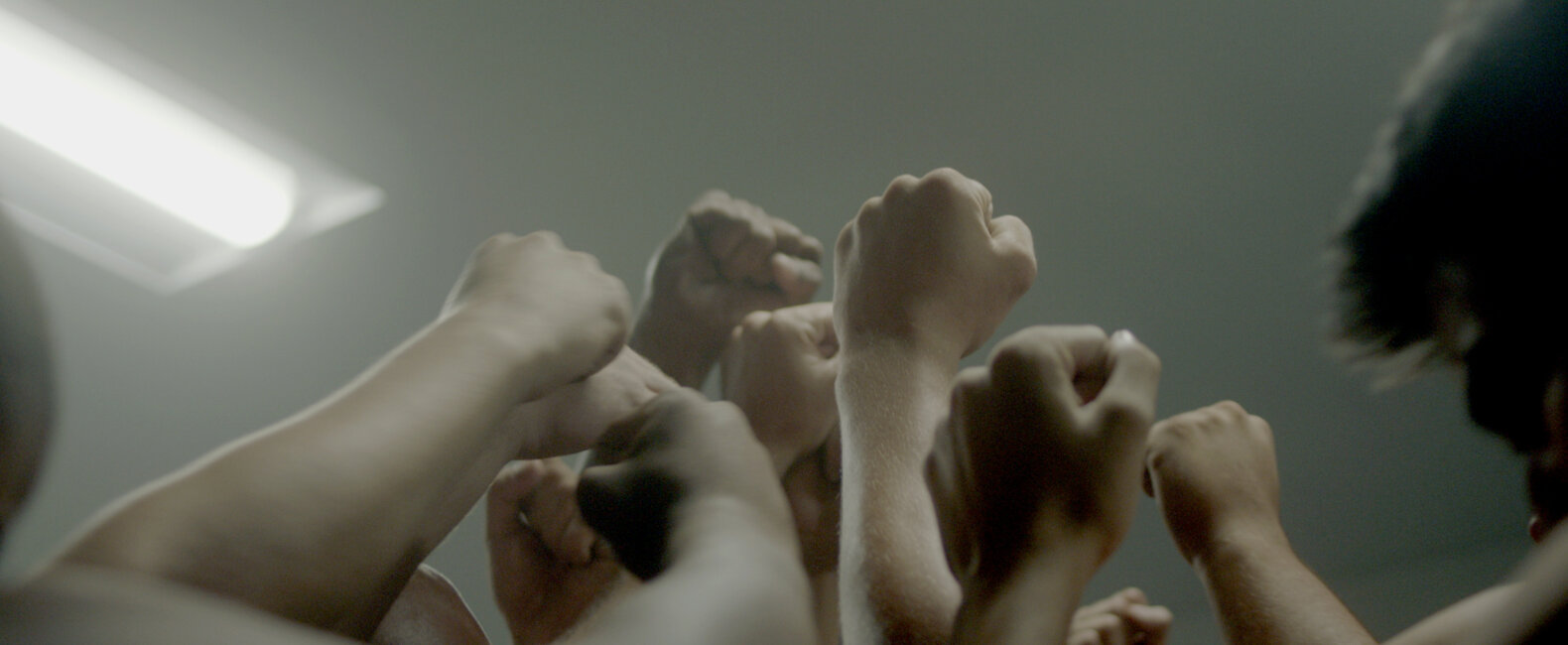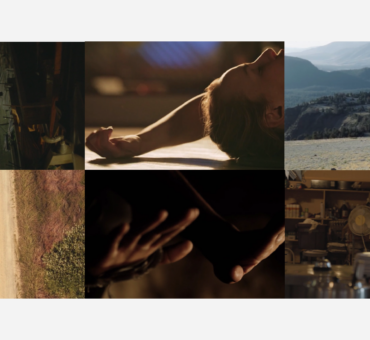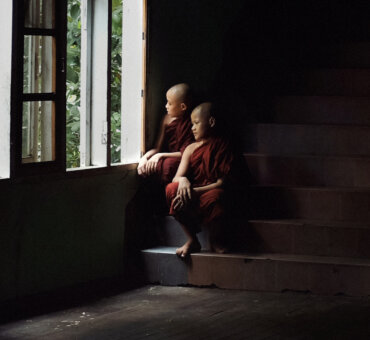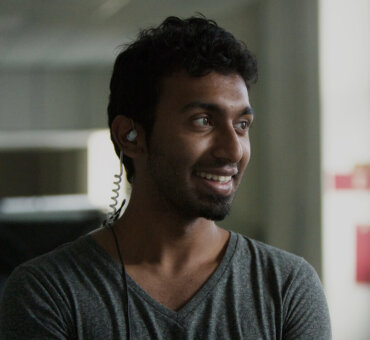The best stories are often the ones we find by accident while we’re working on something else. We don’t force them into being. They already exist. We catch sight of them and can’t get them out of our head. They’re a gift. Or, in Diego Contreras’s words, “a miracle.” And he would know. It was only after abandoning two fully formed concepts and scouting a completely unrelated project that he came upon the subject of his recent short film, The Sandman. Pound for pound, it’s one of the best films we saw last year. And it was a total accident.
We try so hard to come up with great ideas, but in the end the best ideas come to us. Our job is simply to be aware. And to keep creating. Like the old saying goes, the muse always finds you working. Serendipitous inspiration might be a gift, but it’s not often given to lazy people.
We recently talked with one of the hardest-working people we know, Diego Contreras, about his film The Sandman.
MB: How did The Sandman happen?
Diego Contreras: It was pretty unexpected. It basically happened because I found myself cornered. I’d been asked to do a film for this series called Films About Numbers, where a different director gets to put out a film every month. It’s a pretty great concept and a good way to force yourself to make something. I had picked the film for July, and for many reasons I had to keep pushing it back until I basically ran out of time.
I’d already tried to get the project going many months before with two other concepts that I loved, but both turned out to be crazy ambitious. Someone did a rough estimate and said one of them could cost way over $50K to $100K. So, obviously, that was never going to happen. The whole point of the series is that you shoot something with zero budget.
So with two weeks left and basically no concept, I was dreading the idea of having to shoot this film. Then out of the blue, I ran into some kids during a location scout in Trona for a completely different project. A few days later, I was back there with a team of good friends, and we shot The Sandman. What’s amazing is that somehow this film turned out better than those other stories I wanted to tell. Plus, it all happened within a week — from shooting to releasing the edit — and we did it for no money at all.

How did you find these kids?
The company I work with, Bullitt, was working on a pitch for a new TV show featuring Sung Kang from The Fast and the Furious. I can’t say much about it, but think of it as No Reservations but with really cool cars. I was selected to make a 10-minute pitch video for the series — something like a trailer but with elements of a full episode. Soon after I found out, I was called into a conference room to meet with Sung Kang and talk about the project. We had a small budget, and they planned to do a one-day shoot in L.A., where the money can get sucked away very quickly. The plan was to find people with amazing car stories around the city. And I kept thinking we wouldn’t find very interesting or genuine car stories in L.A.
So the first thing I did was suggest that we shoot somewhere else. I told them I’d been scouting this little town called Trona somewhere in the middle of the California desert. And while I was there, I’d seen a ton of backyards filled with classic American cars just sitting there and rusting out under the sun. I said, “There’s gotta be an amazing story there.” Sung lit up at the idea, and he said, “Why don’t you and I go out there and find this story?”
So two days later, off we went — two complete strangers acting like buddies on a road trip, riding around in a big pickup truck and stopping for fast food. It was a pretty funny situation. We finally arrived in Trona in the middle of a crazy hot day, and there was no one on the streets. Literally no one. I’m probably exaggerating, but it felt like an episode of The Walking Dead.
We saw a few cars but nothing close to what I’d promised. I could see Sung was getting a bit antsy, and I started thinking this little adventure was going to fail. That’s when we saw two kids playing football on the street, shirtless. We stopped to ask them for some help, and the first thing they said was, “You’re Han from The Fast and the Furious.” I soon realized that would happen 99 percent of the time in Trona. Sung didn’t answer the question. Instead, he asked if they knew any people with cool cars. They started running down the street and eventually led us to this guy who owns a bunch of muscle cars he’s restored over the years. We later ended up spending about a week in town telling his story.
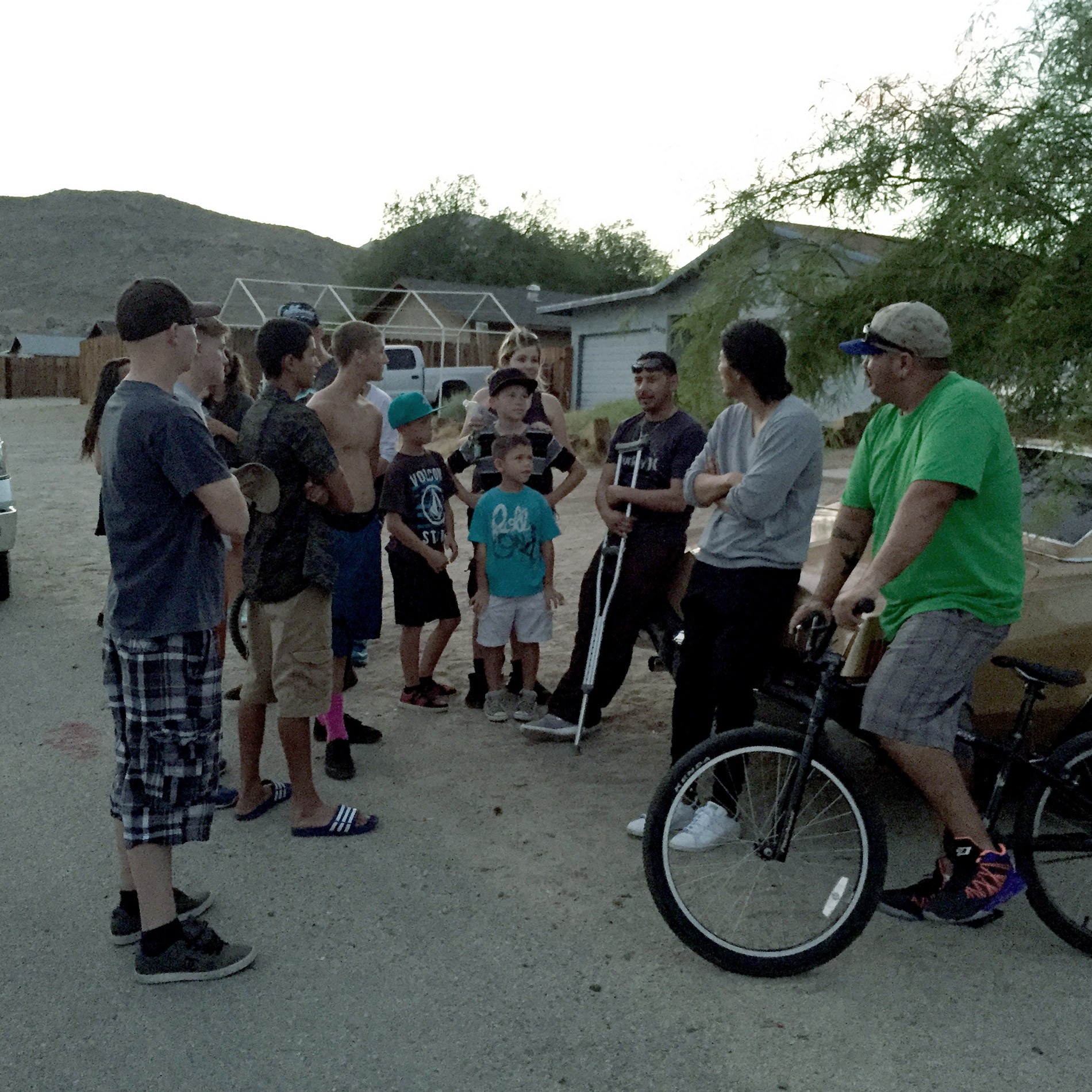
Anyway, the kids we met on the street that day happened to be on the football team you see in The Sandman. On our second day in Trona, we went to watch them practice. I’d heard they play on a dirt field and train without shirts or pads. And I thought it’d be cool to film Sung hanging out with these kids. When we got there, we found them all in the weight room, covered in sweat and dirt. It was gritty and as humid as a sauna. Their training was insane. I was just like, “Whoa. This is the most intense workout I’ve ever seen.” It felt like watching a Gatorade spot, except this was the real deal.
At the end of the workout, the team did these epic chants and followed them up with a team prayer. At that moment I got very emotional. Trona is a place that has gone through some very rough times. You could say there’s not a lot of hope left. But seeing so much hope and unity between these kids was very touching. At that point I just knew I had to go back to tell their story.
At this point in your career, can you sense when a great film is going to happen?
It’s not so much that I can sense when something is going to be great. I feel very lucky to have found a story like The Sandman. I’d been struggling for months trying to get something going for this film series. I’d worked on two different concepts and teamed up with a writer friend of mine to write two very elaborate treatments for them. And I really cared about those stories. I was going crazy trying to figure out a way to make them happen. Then at the very last minute, this amazing story landed in front of me, and it wasn’t a choice anymore. I had to tell this story. Everything was kind of a miracle.
Maybe. But you decided to stop and talk to those kids. You picked up on a great story hiding there that you easily could have missed.
I don’t know why, but I saw the town differently than a lot of people do. I got a chance to see a different side of it. I saw lots of love and joy in these people. When we did a screening of The Sandman in Trona, I turned around and saw people crying. They told me later that it was the first time they’d seen their town shown in a positive light. Normally, people come in and shoot these stories about kids doing drugs and being rebels. They’re more interested in showing the darker side of the place.
After the screening I remember one person told me, “You have eyes to see. You’ve seen beyond what people normally see here.” That struck me. It was great seeing how much impact our little film had to lift these people up and make them feel proud of their town.
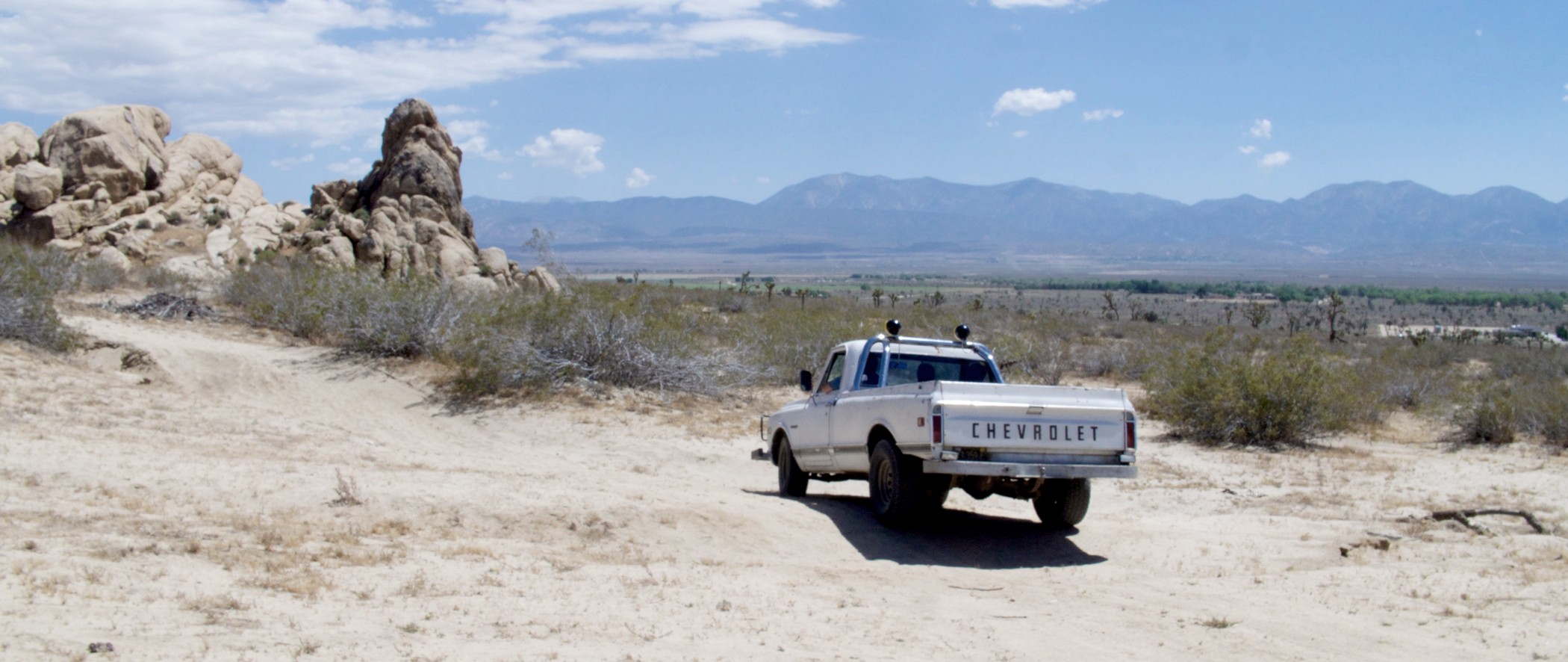
You’re a very intentional filmmaker. You make beautiful treatments for every film you make (or don’t make). How do you balance that with finding these spontaneous stories?
I’m still very intentional. Even if a project has to happen very quickly, I’ll still go through the pain of making a treatment for it. If you look at The Sandman treatment, you can see the whole thing was mostly scripted. Not word for word, but the story, edit, and those long takes were already there on paper. For me, it’s very important for the film team to understand the vision.
On The Sandman, I built the story around what I’d seen on that scouting day. I wasn’t trying to fake anything. I had some parallels I wanted to make to the biblical story of Jericho and the number seven. So I called the coach and asked if the things I had in mind were things they’d actually do. “I want to do a scene with your guys running and chanting. Is that something you’d do? If not, I’m not going to shoot it.” I had to find a way of bringing my own ideas to the story without overstepping the truth.
Even then, we showed up with a few predefined ideas that didn’t work. For example, I asked the coach to write an inspiring speech that he’d give near the end of the film. We tried shooting that speech three or four times, but it wasn’t feeling honest. I was trying too hard to be inspiring, and you can’t force something like that. We ended up not using any of those takes. Instead, I went for a completely spontaneous moment that we got shortly after the coach stormed into the weight room. He was late and we’d already started shooting with the kids. He showed up and walked straight into our shot and started rallying the kids. Everything about that moment was real. He was just being himself. That turned into the intro for the film, and it was so much better than what I’d envisioned going into it.
There is a very long shot in the middle where the kids are chanting and you don’t cut for a long time. Was that planned?
It was mostly planned and choreographed. We shot it three or four times. The coach was supposed to come in at the end and give that inspiring speech I’d asked him to write, but it didn’t feel authentic. So for the last take, the coach asked if he could do a prayer instead. The prayer wasn’t supposed to be in the film, but he said, “I just want to do my thing. I don’t want to do the speech anymore.” I said, “Go for it. Do what you think is right; do what you’d normally do.”
This last take was basically freestyle. We didn’t know how it was going to play out. I was amazed at how our DP, Dan Stewart, was able to react to the scene. When the kids knelt down and prayed, he moved back perfectly, and then he moved in to grab their hands. None of that was intended. It felt like a dance. And it’s hard to explain how something like that happens. I was watching the monitor with Jens Jacob, the producer, and we had tears in our eyes. We looked at each other like, “Oh my god, is this really happening?” We knew that was the take. No question.
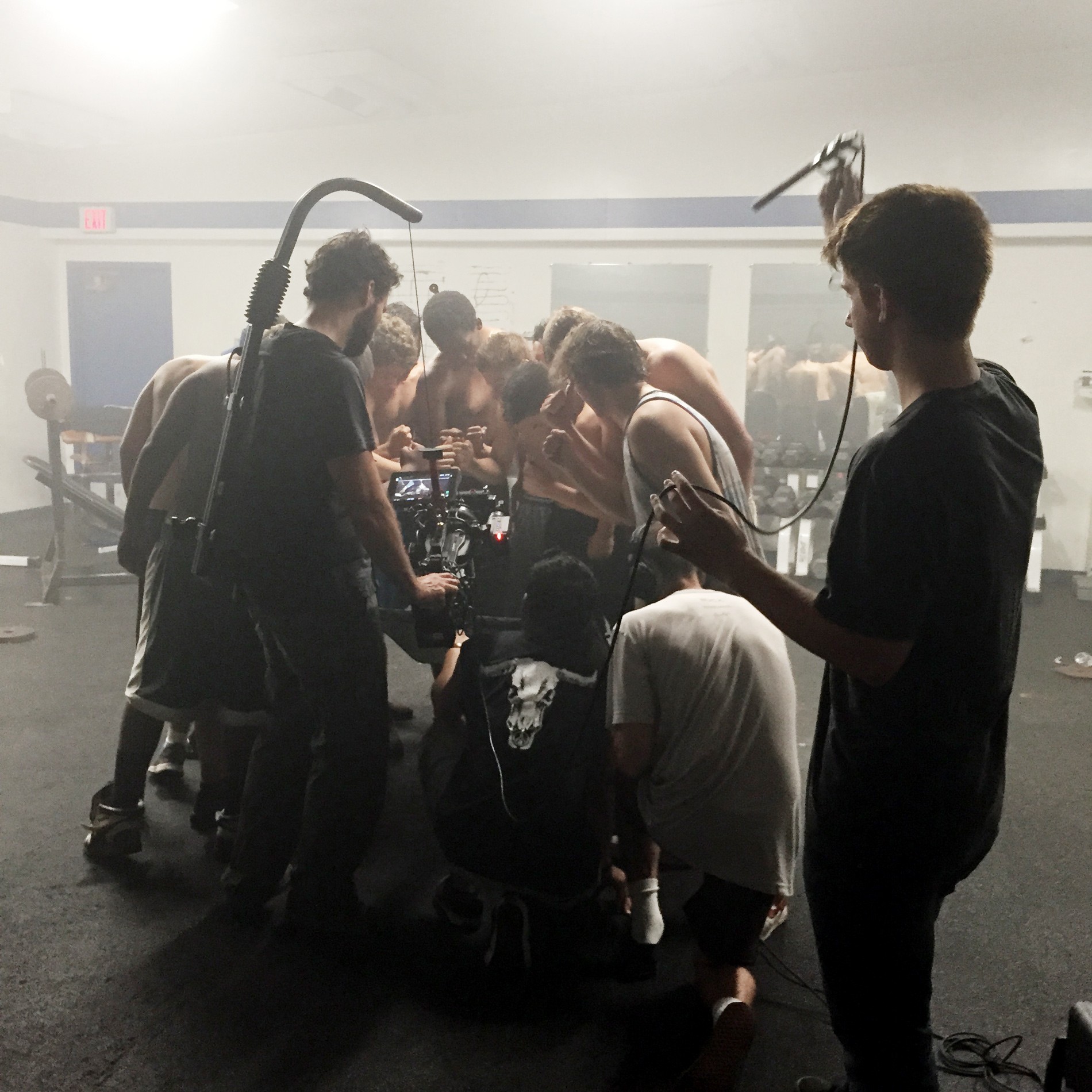
Do your favorite projects happen spontaneously, or are they planned?
Usually I love the projects that are planned. They can be amazing if they’re done right. I love the process of figuring out every detail of a film. But sometimes there’s a lot of magic with letting things happen spontaneously. And one of the things I loved about making The Sandman was that we went back to the basics. We had a camera. We had a light. We had cheap lenses. There was no fancy “film stuff” getting in the way. No crew or grips. No people walking all over the set. It was just us and the coach and kids. It felt intimate and I love that. Sometimes I really miss that simplicity: Here’s a camera, here’s something going on, go capture it.
I’ve watched The Sandman a lot over the past few months. It holds up in a way few films do.
I know what you mean. Maybe I shouldn’t say this, but I feel like there are lots of videos these days that have amazing visuals filled with moody and cool “frames,” but they lack an emotional thread to pull them all together. That’s the challenge a lot of us young directors are facing right now: How can we capture the audience? How can we make them feel or connect with something? Not just with pretty visuals, but with a relatable human story behind them.
Diego is one of the hardest working filmmakers out there, and he has the footage to prove it. He’s made his work from The Sandman (and more) available on our sister company’s site: filmsupply.com.





































































